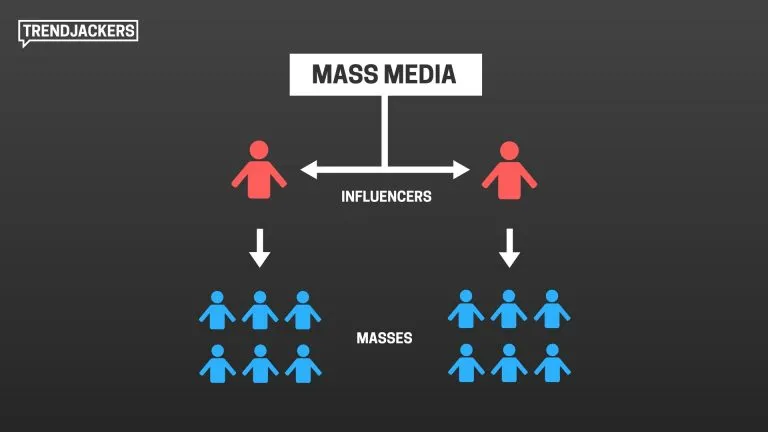In our ever-evolving media landscape, the Two-Step Flow Theory, initially proposed by Paul Lazarsfeld and Elihu Katz, remains a relevant and enlightening lens through which to understand the complex dynamics of contemporary media and communication. This theory, which suggests that information flows through opinion leaders before reaching the broader public, offers profound insights into how modern-day media and technology impact our lives. In this blog, we’ll explore how the Two-Step Flow Theory can be applied to comprehend various contemporary examples of media and communication.
Understanding the Two-Step Flow Theory
The Two-Step Flow Theory suggests that media information doesn’t have a direct impact on individuals. Instead, it undergoes mediation by opinion leaders, who are often well-informed and socially influential. These opinion leaders act as intermediaries, filtering and providing context to the information before sharing it with the general public. This phenomenon continues to hold relevance in today’s media landscape, even with the significant transformations brought about by digital platforms.
Social Media Influencers: Modern Opinion Leaders
In today’s digital age, social media has given rise to a new breed of opinion leaders—social media influencers. These individuals wield significant influence over their followers, shaping opinions, behaviors, and consumer choices. Consider a lifestyle influencer on Instagram. They encounter the latest trends, products, and experiences and, in turn, share them with their followers.
For instance, an Instagram influencer passionate about sustainable living may promote eco-friendly products or practices. Their followers, often seeking guidance in this area, trust their recommendations. In this scenario, the Two-Step Flow Theory is at work: the influencer becomes the opinion leader who filters and disseminates information to their followers. This process helps individuals make informed choices and align their values with the products they purchase, illustrating the enduring applicability of the Two-Step Flow Theory in the digital era.
News Aggregators and Social Sharing
The Two-Step Flow Theory is also apparent in how news and information are shared on digital platforms. Online news aggregators, for example, curate and select news stories that are then shared on social media platforms. Users who follow or are friends with individuals they consider well-informed often rely on them to filter news stories and provide context.
Consider a politically engaged individual who follows a friend known for their in-depth political knowledge. When this friend shares a news article or commentary, they implicitly act as an opinion leader. The recipient, trusting their friend’s judgment, may pay closer attention to the shared content, which shapes their perspective on the given issue. This exemplifies how opinion leaders continue to play a vital role in shaping public opinion in the digital age.
Conclusion
The Two-Step Flow Theory, despite being formulated in a different media landscape, remains remarkably applicable to understanding contemporary examples of media and communication. In an era where information is abundant and accessible, opinion leaders—whether social media influencers, friends, or colleagues—continue to serve as intermediaries in the dissemination of information. They filter, contextualize, and influence the information that reaches the broader public, making the Two-Step Flow Theory an indispensable framework for comprehending the intricate dynamics of media influence in the digital age.
Featured Image From: https://medium.com/@supercrossking/applying-the-two-step-flow-theory-b46a4a3ed36d

